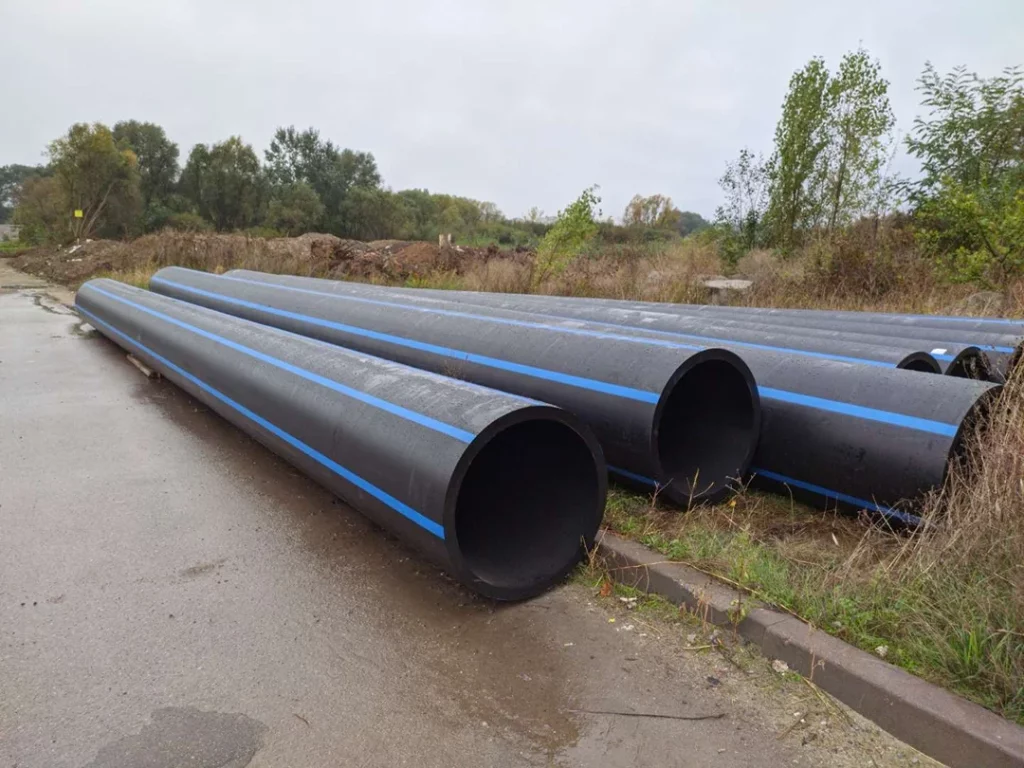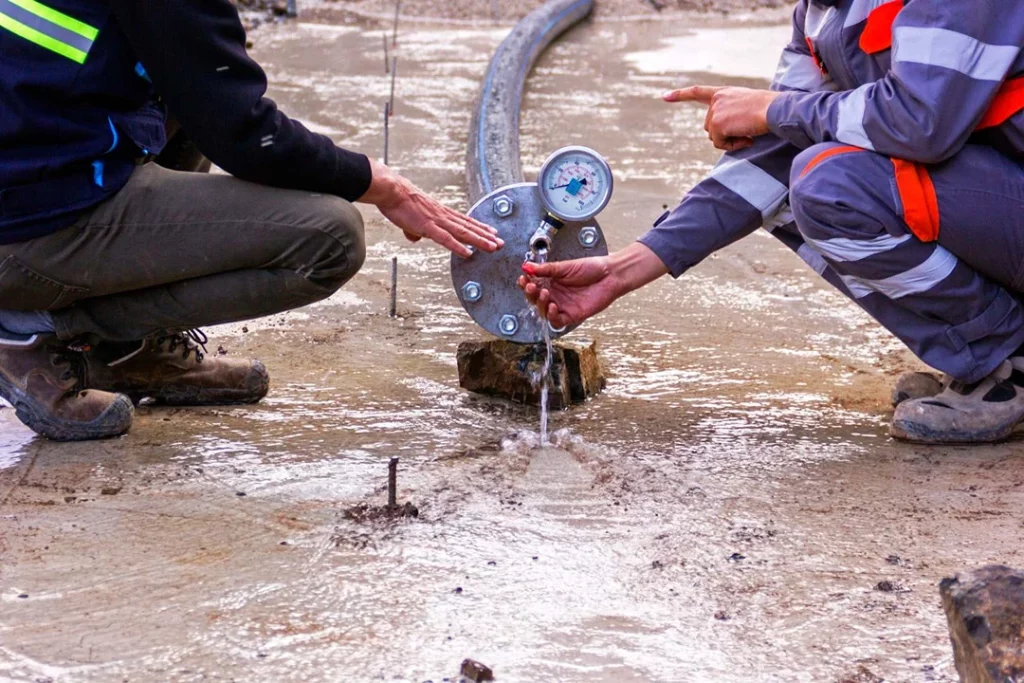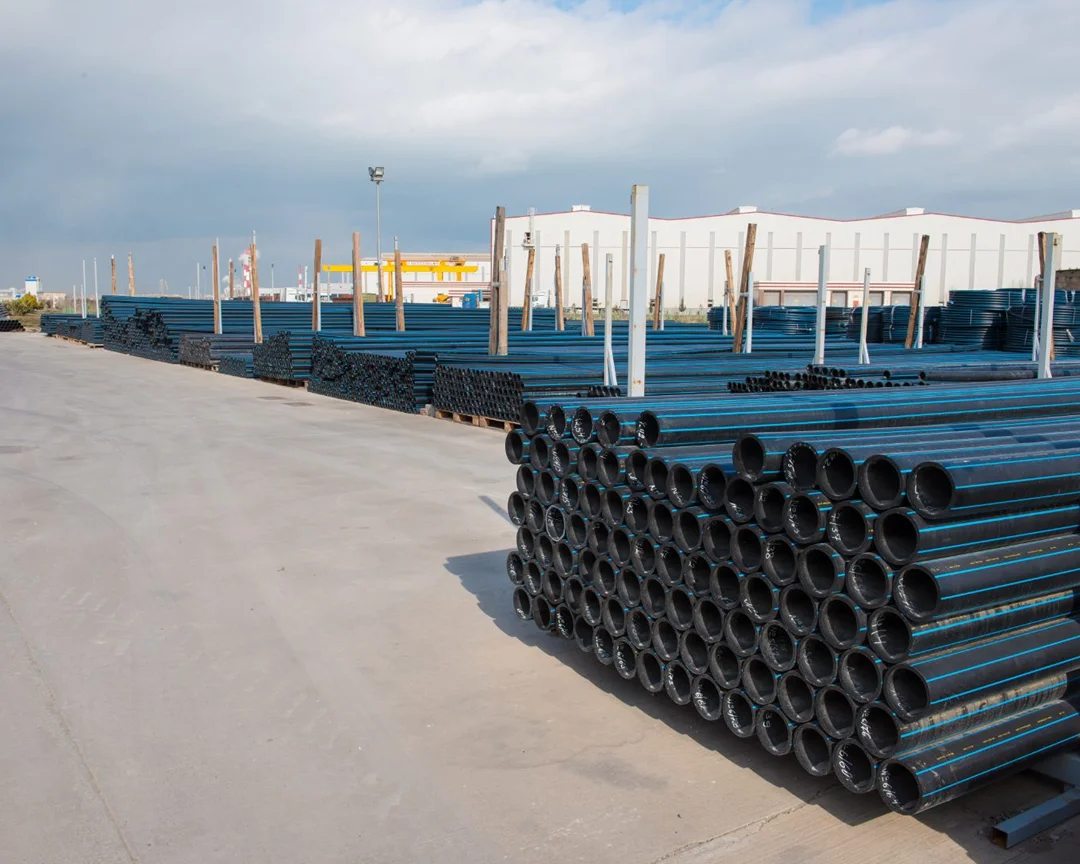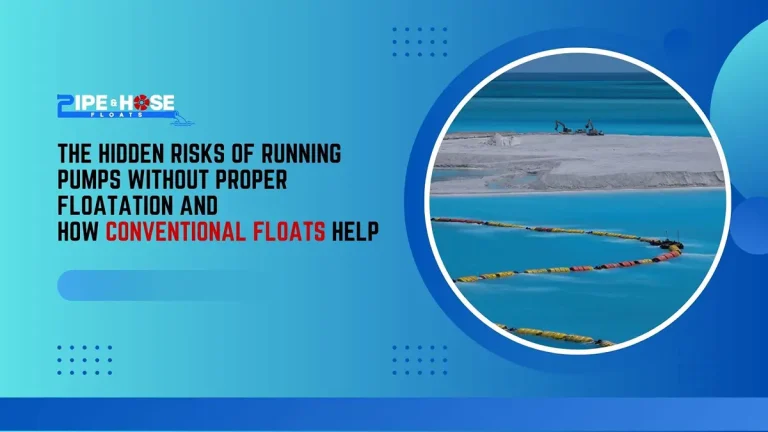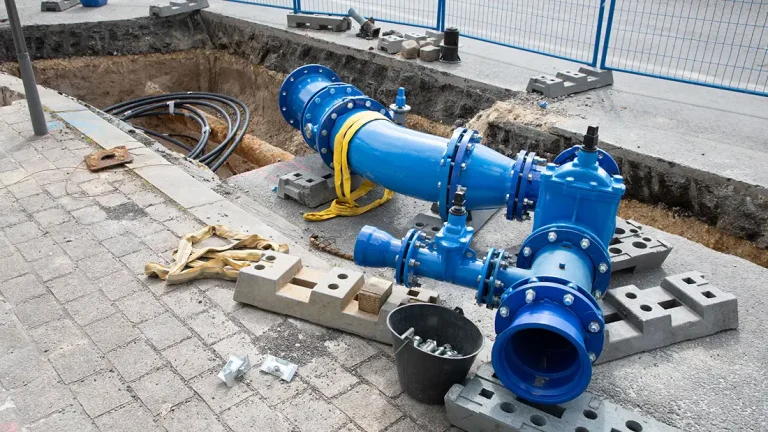Introduction
When it comes to designing a plumbing or infrastructure project, one of the most crucial factors is selecting the right HDPE pipe size. The efficiency, safety, and cost-effectiveness of your system all depend on choosing the correct pipe dimensions. Whether you’re managing an industrial water supply, planning an irrigation system, or setting up residential sewage lines, understanding the correct HDPE pipe size for your application is key.
HDPE (High-Density Polyethylene) pipes have become the preferred material for various industries due to their durability, chemical resistance, and flexibility. However, the availability of different HDPE pipe sizes can also make the selection process a bit overwhelming.
This guide is designed to help you decipher the HDPE pipe size chart and select the best pipe for your needs with confidence. With a clear understanding of dimensions, standards, and application factors, you’ll be in a better position to make informed decisions and avoid costly errors.
What Is HDPE Pipe?
HDPE pipe, or High-Density Polyethylene pipe, is a high-performance thermoplastic piping solution crafted from petroleum-based polyethylene. Choosing the correct HDPE pipe size is crucial to the success of any project. The size affects flow capacity, pressure rating, and compatibility with system requirements. Whether you’re working on a municipal water line, agricultural irrigation, or industrial fluid transport, selecting the right HDPE pipe size ensures optimal performance. Misjudging HDPE pipe size can lead to flow restrictions or increased costs, so it’s important to rely on accurate specifications and size charts.
Engineers and contractors must consider various factors, such as wall thickness, Standard Dimension Ratio (SDR), and outer diameter, when selecting an HDPE pipe size. With proper planning and knowledge, selecting the right HDPE pipe size ensures durability, efficiency, and long-term value for any application.
Because these applications differ in terms of pressure requirements, chemical exposure, and installation conditions, selecting the correct HDPE pipe size is critical. It involves more than just choosing a diameter — engineers and contractors must consider wall thickness (SDR), pressure rating, and compatibility with the system’s purpose. Therefore, a deep understanding of the HDPE pipe’s use case is essential when navigating the selection process, ensuring long-term performance, cost efficiency, and regulatory compliance across industries.
Understanding HDPE Pipe Size Standards
To make the most of an HDPE pipe size chart, it’s essential to understand how HDPE pipes are measured and categorized.
1. SDR (Standard Dimension Ratio)
SDR is one of the most critical concepts in HDPE sizing. It refers to the ratio of the pipe’s outer diameter to its wall thickness:
SDR = Outer Diameter / Wall Thickness
A lower SDR indicates a thicker pipe wall, which typically means the pipe can handle higher pressure. For instance, SDR 11 is thicker and more pressure-resistant than SDR 17.
Understanding SDR is crucial for determining the pressure rating of a pipe, which directly affects the selection of HDPE pipe size for applications involving high-pressure fluid flow.
2. Pressure Ratings
Pressure ratings, typically expressed in bars or PSI (pounds per square inch), are crucial in determining the HDPE pipe sizes that can safely handle the operational pressure of your system. The pressure rating of an HDPE pipe is closely tied to its SDR (Standard Dimension Ratio), with lower SDR values indicating thicker pipe walls and higher pressure tolerance. When selecting an HDPE pipe size, it is essential to ensure that the pipe can withstand the maximum pressure your system will experience during operation. Choosing a pipe with an inadequate pressure rating can lead to catastrophic failure, leaks, and reduced system lifespan.
For example, smaller HDPE pipe sizes with higher SDRs may be suitable for low-pressure applications like residential water systems or irrigation, while larger HDPE pipe sizes with lower SDRs are necessary for industrial or municipal systems requiring higher pressure resistance. Always match the appropriate HDPE pipe size and SDR to the specific pressure requirements of your application to ensure optimal performance, safety, and longevity of the piping system.
3. Nominal Diameter (ND)
This refers to the standardized diameter used for identification purposes. While it doesn’t always correspond to the exact inner or outer diameter, it helps simplify communication and product labeling across manufacturers.
By understanding these elements, you can interpret an HDPE pipe size chart more effectively and make precise decisions based on your system requirements.
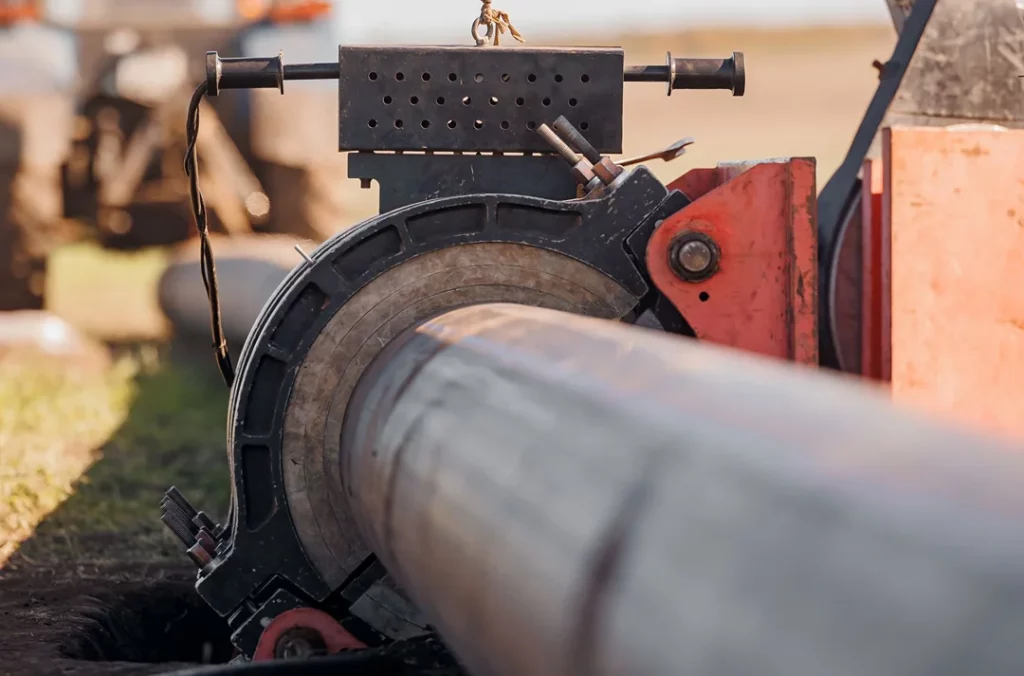
HDPE Pipe Size Chart Explained
Below is a simplified version of a typical HDPE pipe size chart, which can serve as a quick reference guide.
Nominal Diameter (mm) | Outer Diameter (mm) | SDR11 Wall Thickness (mm) | SDR17 Wall Thickness (mm) | Pressure Rating (Bar) |
20 | 20.0 | 2.3 | 1.2 | 16 / 10 |
32 | 32.0 | 3.0 | 1.9 | 16 / 10 |
63 | 63.0 | 5.8 | 3.8 | 16 / 10 |
90 | 90.0 | 8.2 | 5.4 | 16 / 10 |
110 | 110.0 | 10.0 | 6.6 | 16 / 10 |
160 | 160.0 | 14.6 | 9.5 | 16 / 10 |
225 | 225.0 | 20.5 | 13.4 | 16 / 10 |
315 | 315.0 | 28.6 | 18.7 | 16 / 10 |
When reviewing the HDPE pipe size chart, always cross-reference SDR values and pressure ratings. If your system has high water pressure, you’ll need a lower SDR and thicker-walled pipe.
Factors to Consider When Selecting HDPE Pipe Size
Choosing the correct HDPE pipe size isn’t just about matching numbers on a chart. Several external and operational factors must be considered to ensure that the pipe performs as expected.
1. Flow Rate and Pressure
When selecting the appropriate HDPE pipe size, one of the key factors to consider is the flow rate—the amount of fluid that needs to be transported per minute or hour. This measurement directly influences the internal diameter of the pipe required for efficient fluid movement. If the pipe’s internal diameter is too small, it can cause flow restrictions, resulting in pressure drops and inefficiency. Conversely, an oversized pipe can inflate costs without providing any added benefit.
Once the required flow rate is calculated, it must be paired with the system’s pressure rating (measured in PSI or bar) to determine the correct HDPE pipe size. The pressure rating is critical because it dictates the pipe’s ability to withstand internal pressure during operation without risk of failure. The SDR (Standard Dimension Ratio) is also vital in this equation, as it links the pipe’s wall thickness to its pressure tolerance.
For example, smaller HDPE pipe sizes (with higher SDRs) are suitable for low-pressure systems with moderate flow rates, such as residential or agricultural applications. Larger HDPE pipe sizes with lower SDR ratings are required for high-pressure systems, such as industrial or municipal water distribution, to ensure the pipe can withstand the required pressure while maintaining sufficient flow capacity.
By combining flow rate, pressure, and HDPE pipe size, you can select a pipe with the right diameter and strength to ensure both operational efficiency and safety in your piping system.
2. Type of Application
- Residential: Moderate flow and pressure. Focus on durability and leak prevention.
- Agricultural: Often long-distance runs requiring consistent pressure.
- Industrial: Chemical compatibility and high-pressure resistance are crucial.
- Municipal Sewage: Gravity flow pipes often require wider diameters but lower pressure resistance.
Each of these scenarios requires a different approach to selecting the correct HDPE pipe size.
3. Installation Method
When using trenchless techniques like horizontal directional drilling, it’s essential to select an HDPE pipe size with sufficient tensile strength. SDR11 is often preferred in these cases.
4. Local Regulations
Always check for compliance with local building codes, environmental standards, and water quality requirements.
HDPE Pipe Sizing for Different Applications
Let’s break down the ideal HDPE pipe size recommendations across various industries:
1. Water Supply Systems
These systems typically operate under moderate to high pressure. For most municipal and residential applications, SDR 11 or SDR 17 pipes, ranging from 20 mm to 315 mm, are common.
Using the HDPE pipe size chart, you’ll likely select pipes with thicker walls to handle fluctuations in pressure and temperature.
2. Agricultural Irrigation
Efficiency is key in irrigation systems. Pipes ranging from 32 mm to 160 mm, with SDR 17 or SDR 21, are typically used. A larger HDPE pipe size may be chosen for mainlines, with smaller sizes branching off for drip or sprinkler systems.
3. Sewage and Drainage
Sewage systems generally use larger diameter pipes, but because the flow is gravity-fed, the pressure requirement is lower. SDR26 or higher may be used with larger HDPE pipe sizes, often 110 mm and above.
4. Gas Distribution
Safety is critical. Gas pipes require SDR 11 or even SDR 9 to prevent leaks. The HDPE pipe size must match the exact specifications for inner diameter, wall thickness, and pressure containment.
5. Industrial Applications
Chemical plants and processing industries often require HDPE pipes with high chemical resistance and thick walls. SDR11 or SDR13.6 pipes in diameters ranging from 63 mm to 225 mm are common. Here, reviewing the HDPE pipe size chart against material compatibility tables is crucial.
Common Mistakes to Avoid
Selecting the incorrect HDPE pipe size can have serious consequences, from performance inefficiencies to costly repairs or even system failures. To avoid these issues, it’s essential to be aware of some common mistakes that professionals and DIY users often make during the selection process.
Incorrect Pipe Diameter
Another frequent issue is choosing a pipe diameter that doesn’t align with flow requirements. If the HDPE pipe size is too small, it can restrict fluid flow, cause pressure drops, and reduce system efficiency. On the other hand, selecting a diameter that’s too large may increase material costs and lead to inefficient system performance. Pipe sizing should always be based on accurate flow calculations, considering both the current and future demands of the system.
Ignoring the Application Type
Not all HDPE pipes are suitable for all applications. For instance, a pipe designed for agricultural irrigation may lack the necessary pressure resistance or safety ratings for natural gas distribution. Understanding the specific conditions and safety standards of the intended application is crucial when selecting the appropriate HDPE pipe size.
Misinterpreting the Size Chart
Many users misread the HDPE pipe size chart, confusing the nominal diameter with the outer diameter or failing to understand how SDR affects wall thickness. Familiarizing yourself with how the chart is structured and how each dimension relates to the others is key to making the right choice.
Expert Tips for Choosing the Right HDPE Pipe
Selecting the correct HDPE pipe size is a decision that impacts the efficiency, safety, and longevity of your piping system. To ensure optimal results, it’s wise to follow expert recommendations that guide proper sizing and installation. Here are some expanded tips to help you make informed decisions when choosing HDPE pipes for your project:
1. Use Flow Rate Calculators
Accurate flow rate calculations are crucial for determining the internal diameter required for efficient fluid movement. Several online tools and software solutions are available that allow you to input details such as pressure, fluid type, and distance, which then suggest the ideal HDPE pipe size. These tools help eliminate guesswork and ensure your system operates at peak performance with minimal energy loss.
2. Consult with Engineers
If your project involves complex conditions, such as high pressure, chemical exposure, or unique installation environments—it’s best to consult with a qualified engineer. Their expertise ensures that your selected HDPE pipe size complies with industry standards, safety codes, and long-term performance requirements. Engineers can also help assess load-bearing needs and address environmental challenges, such as soil movement or temperature variations.
4. Plan for Future Expansion
If you anticipate scaling your system, consider using oversized main lines or installing tees and connectors that allow easy expansion. This foresight reduces the need for extensive overhauls later on and ensures your HDPE pipe size selection remains functional for years to come.
5. Buy from Certified Suppliers
Always purchase pipes from reputable, certified suppliers. This guarantees that the HDPE pipe sizes meet international standards for pressure, durability, and quality. Certified products also come with warranties and quality assurance documentation, offering peace of mind for your investment.
Final Thoughts
Selecting the ideal HDPE pipe size for your project may seem complex at first, but with the right knowledge and resources, it becomes a straightforward and strategic decision. Understanding how HDPE pipes are categorized—through SDR ratings, pressure capacities, and outer diameter measurements—allows you to confidently interpret a detailed HDPE pipe size chart and choose the best fit for your specific needs.
Before purchasing, always evaluate key system variables such as maximum pressure, required flow rate, installation environment, and compliance with local or industry regulations. These factors directly influence the performance and lifespan of your piping system, playing a crucial role in determining the appropriate HDPE pipe size. Selecting the wrong HDPE pipe size can lead to inefficiencies in flow, increased energy usage, potential safety hazards, and expensive repairs or replacements down the line. On the other hand, choosing the correct HDPE pipe size ensures that your system operates efficiently, maintains structural integrity, and accommodates future scalability. By carefully considering all these elements in your planning process, you set your project up for long-term success with a reliable and cost-effective solution.
Whether you’re developing an expansive irrigation system or upgrading a home water line, selecting the correct HDPE pipe size is crucial to achieving long-term success and reliability in your infrastructure.

